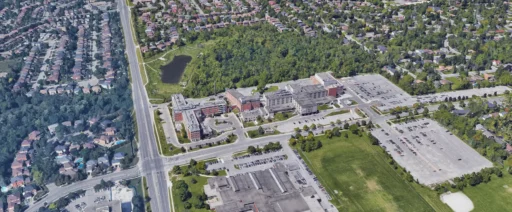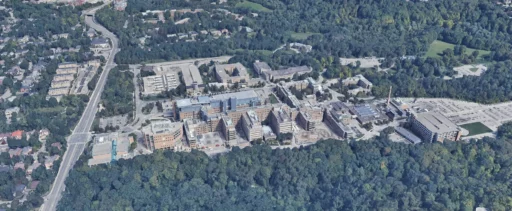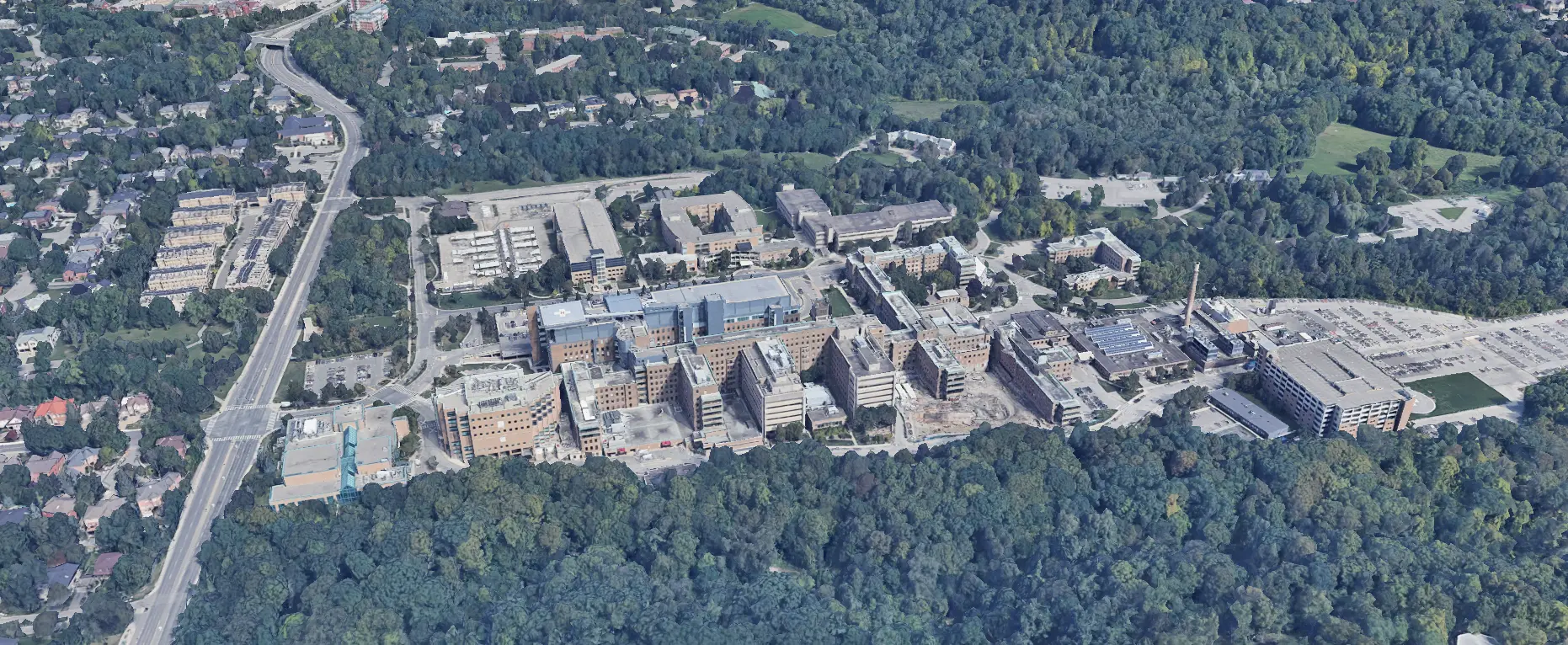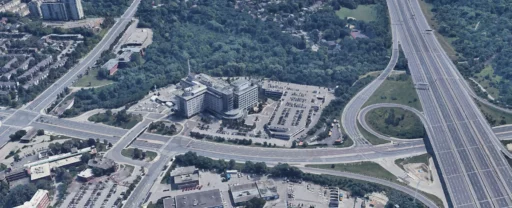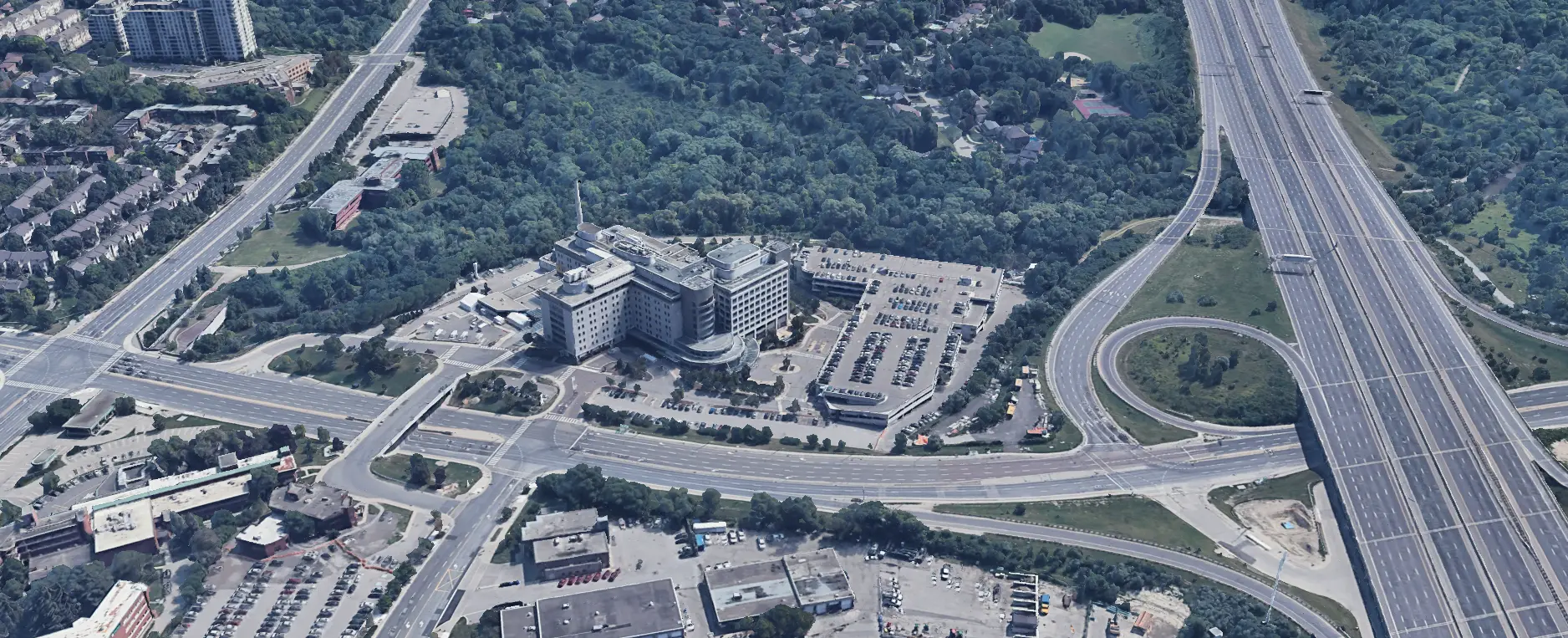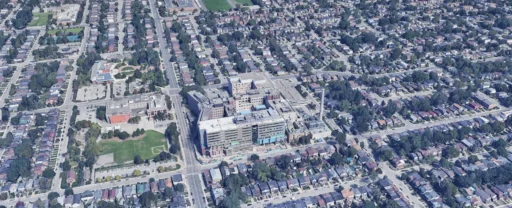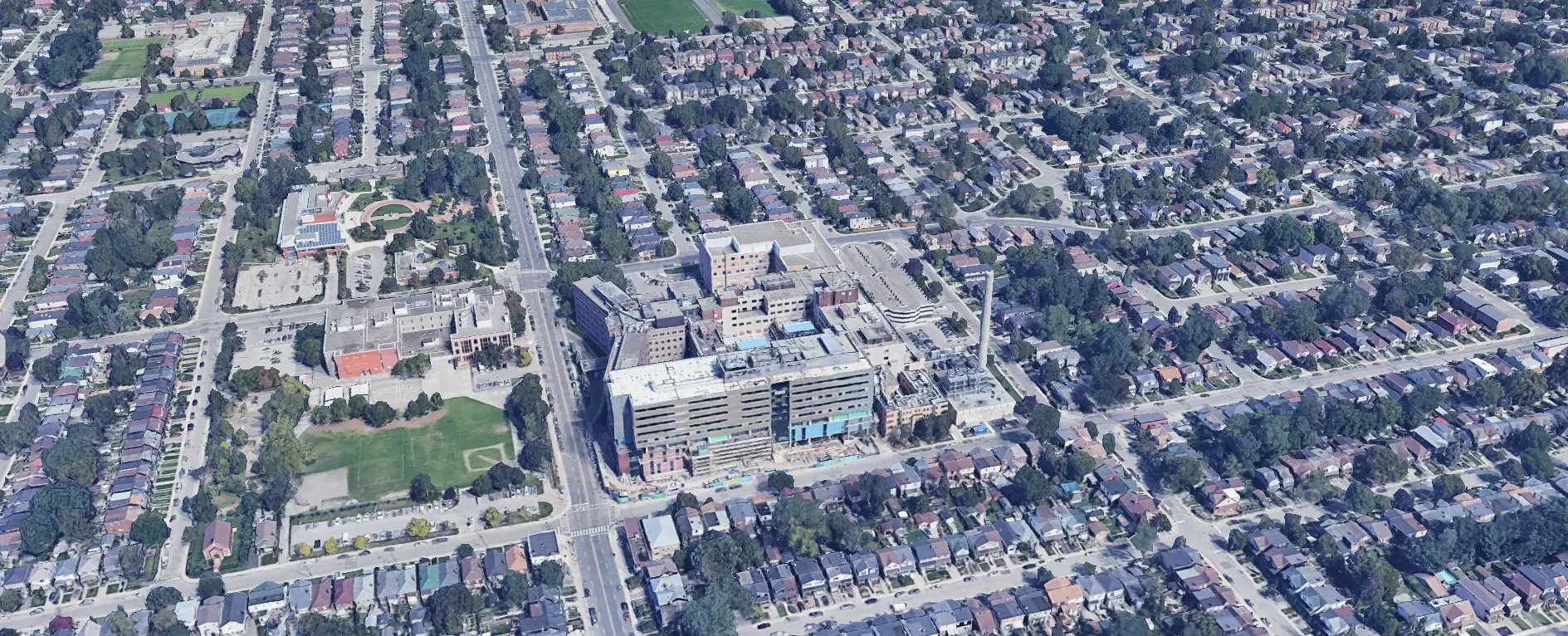
Shouldice Hospital (7750 Bayview Avenue, Markham) is a renowned hospital in the Toronto area. The hospital exclusively specializes in hernia repair surgery.
Table of contents:
- Introduction
- Shouldice hernia repair technique
- Patient reviews for Shouldice Hospital
- Employee reviews for Shouldice Hospital
- Surgery wait times at Shouldice Hospital
- Cost of hernia surgery at Shouldice Hospital
- History of Shouldice Hospital
Introduction
Shouldice Hospital is a renowned private hospital located in Markham’s Thornhill district, just north of Toronto, Ontario. Founded in 1945 by Dr. Earle Shouldice, it specializes exclusively in hernia repair surgery. The hospital performs over 7,000 hernia repair surgeries annually, more than most surgeons do in their entire careers. This high volume contributes to Shouldice’s expertise and excellent surgical outcomes.
The hospital claims to have the lowest rate of complications and hernia recurrences in the world, less than 0.5% for primary inguinal hernia repairs. Patients typically stay for 3 days or more after surgery, contributing to the hospital’s revenue from semi-private room charges, though the surgeries themselves are covered by Ontario’s public health insurance plan. The facility is situated on a 20-acre estate with gardens and walking paths, giving it a resort-like atmosphere.
Shouldice Hospital has treated notable former patients including politicians like Joe Clark, Jack Layton, Rand Paul, and consumer advocate Ralph Nader. In 1983, Harvard Business School featured Shouldice as a case study on its unique, specialized, and efficient hernia repair process, contributing to the hospital’s international reputation. It is one of only a few private hospitals grandfathered and allowed to operate in Ontario under the Private Hospitals Act.
Shouldice hernia repair technique
The key differences between the Shouldice hernia repair technique and conventional hernia repair techniques are:
- Use of local anesthesia: The Shouldice technique is performed under local anesthesia with sedation, rather than general anesthesia. This allows the patient to cooperate by straining to help identify any occult or hidden hernias.
- Comprehensive inguinal dissection: A thorough dissection is performed to expose the entire inguinal floor, spermatic cord, and any hernia sacs. This allows identification and repair of all hernias, including occult ones.
- Four-layer reconstruction: The key difference is the eponymous four-layer reconstruction of the posterior inguinal wall using the patient’s own tissues without mesh. The transversalis fascia is incised and overlapped in a double-breasted fashion using two layers of sutures. The conjoined tendon is sutured to the inguinal ligament in two overlapping layers to reinforce the posterior wall. The external oblique aponeurosis is closed in front of the spermatic cord.
- Continuous suture technique: The repair uses a continuous suture, typically with stainless steel wire or monofilament, rather than interrupted sutures.
- Holistic approach: The Shouldice technique involves dedicated preoperative preparation, early ambulation, and a focus on postoperative recovery through exercises and a supportive environment.
Patient reviews for Shouldice Hospital
Patient reviews of Shouldice Hospital are overwhelmingly positive, with the facility receiving a high rating on RateMDs from over 120 reviews. Patients consistently praise the exceptional surgical outcomes they experienced after undergoing hernia repair procedures at the hospital.
Many reviewers express amazement at having zero side effects or complications following their surgeries at Shouldice. They laud the hospital’s world-class expertise in this specialized field of hernia repair, with some even stating they had heard it referred to as “the best around, the best in the world” for these types of procedures.
In addition to the excellent medical results, patients frequently commend various aspects of the overall experience and amenities at Shouldice Hospital. The quality of the facilities, grounds, staff attentiveness, and food service are routinely highlighted as standout positives in patient testimonials.
While a few negative reviews exist citing issues like long wait times or staff dismissiveness, these seem to be outliers. The vast majority of patient feedback is glowingly positive about the surgical outcomes, holistic patient care approach, resort-like environment, and the hospital’s well-earned global reputation as a leading center of excellence for expert hernia repair.
Employee reviews for Shouldice Hospital
Employee reviews consistently depict Shouldice Hospital as an excellent place to work with a strong sense of community and teamwork. Employees frequently describe the atmosphere as friendly, with coworkers treating each other like family.
One aspect that receives particular praise from employees is the quality of the hospital food. Contrary to common stereotypes about subpar hospital cuisine, reviewers commend the food at Shouldice as being creative, fresh, nutritious, and sustaining. This amenity seems to be appreciated by those working at the facility.
Another positive point highlighted in employee reviews is the opportunity to learn about and be involved with Shouldice’s renowned hernia repair technique and surgical expertise.
Shouldice appears to have a long-tenured staff, with the average length of employment being around 10 years according to some sources. This suggests a positive work environment that fosters job satisfaction and retains employees over extended periods.
Surgery wait times at Shouldice Hospital
Good Caring Canada tracks hernia surgery wait times in Ontario public hospitals. Wait times for Shouldice Hospital is unknown.
Cost of hernia surgery at Shouldice Hospital
The overall cost for undergoing a hernia repair surgery at the Shouldice Hospital is not published. However, some cost components are available. Each day of the patient’s stay at the hospital costs $320. The surgical fee itself for the hernia repair procedure is $650. If general anesthesia is required, there is an additional $300 fee.
For Ontario residents, the surgeries themselves are covered by the provincial public health insurance plan (OHIP), with room charges contributing to Shouldice’s revenue as a partially publicly-funded hospital.
For patients coming from outside of Ontario or Canada, Shouldice Hospital likely charges the full uninsured rate. However, the specific comprehensive price for out-of-province or international patients is unknown.
History of Shouldice Hospital
Shouldice Hospital was founded in 1945 by Dr. Earle Shouldice. Dr. Shouldice had developed an innovative surgical technique for repairing hernias during World War II while operating on army inductees. After the war ended, he had a backlog of 200 civilian patients awaiting his hernia surgery technique. Due to a scarcity of hospital beds at the time, Dr. Shouldice received authorization from the provincial government to open his own small hospital in a six-room nursing home in downtown Toronto in July 1945.
As demand for Dr. Shouldice’s hernia repairs grew, he purchased a large 130-acre estate with a 17,000-square foot main house in the suburb of Thornhill in 1953. This became the new location for an expanded Shouldice Hospital, initially with 36 beds. Over time, a large wing was added to increase the total capacity to 89 beds. After Dr. Shouldice’s death in 1965, his long-time associate Dr. Nicholas Obney took over as surgeon-in-chief and chairman of the newly formed Shouldice Hospital Limited corporation.
Under Dr. Obney’s leadership, the hospital’s surgical volume continued increasing, reaching 6,850 hernia operations performed in 1982. Shouldice Hospital specialized exclusively in repairing external abdominal hernias using Dr. Shouldice’s innovative multilayer muscle reinforcement technique without mesh. This allowed their surgeons to develop expertise repairing over 7,000 hernias annually – more than most surgeons do in their careers.
Shouldice Hospital was grandfathered in as one of the few remaining private hospitals allowed to operate in Ontario after the Private Hospitals Act banned new private hospitals in 1971. It has maintained its specialized focus and unique approach centered on hernia repairs to become a world-renowned center of excellence that attracts international patients.








